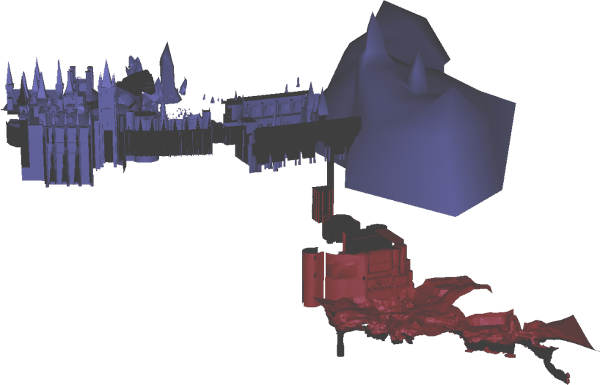Bad Design As A Swear Word
People like to talk about game design.

More and more these days game design feels a bit like being the kind of people who have strong opinions on coaches in sport. It’s one of those things where there seem to be some sort of generally-agreed upon field of good versus bad decisions, a sort of external commentary option. This is Good Design Because. This is Bad Design Because.
There’s a language we use here, and I’m not sure it’s helpful.
It’s not helpful because the more I hear it, the more and more often people with no clue about games who nonetheless think of themselves as experts, which for now we’ll shorthand as gamer, we hear these gamers talk about game’s design as if there is game design that is good and there is game design that is bad, and the more your work belongs in the first group, the good-er it is.
My favourite example of this is an infamous criticism of Dark Souls 2.

See, back in Dark Souls, there’s this point about how some sections of the world connect to other parts of the world in a way that kind of makes sense. In Dark Souls 2, this is less of a clearly communicated thing. Oh, both Dark Souls and Dark Souls 2 make conventionally-disconnected, teleporting-based maps, it’s not like one does and the other doesn’t.
In Dark Souls 2 there’s a windmill that you climb, and at the top of the windmill there’s an elevator. This elevator takes you from the top of that windmill, up into what seems to be an underground cavern full of lava and with another big fortress inside it that you then have to fight your way through, to get up to another boss you fight in a lake of lava.

This is generally brought out as an example of bad design, where these two elements don’t connect in the same way as the first game did. Now there are a bunch of ways to address this, but the best response, in my opinion, is who cares.

Design is not a bar you fill.
Design is not a percentage that you attain, as you complete the level.
Design is a sequence of choices made within the existing constraints of the project to achieve an intended end. That intended end can change, the constraints can change, the whole project can change, but nonetheless, design is not about attainable end goals as it is about choices.
Evoking game like game is making bad design into a swear word.
It also means that you treat good design like an act of emulation. You’ll treat doing good design as a task of making something that’s like something else. It creates this sort of culture of nitpickery, this conception of design as traits, rather than design as choices.

I’ve covered this topic before – about two years ago, now. Same example, too – Dark Souls 2 elevator, even!
But this one has progress bars, and more than that, this one comes up because I think that while the habit is a problem, it belies a bigger problem underneath itself. It is not that it is bad design to do X is a simplistic phrase. It’s that we bring up bad design when we’re trying to attack an entity, when we’re trying to prove something about it. Many, many times, what we’re trying to say is I don’t like this, and masking that want under the cloak of it being bad design.
It’s not an unuseful shorthand. For example, I still think most of the Assassins Creed games are ‘badly designed,’ because their mechanics do not hold together well in a satisfying way, or connect well to the way those games try to tell their story. Yet many times, especially in tabletop games, we will hear those words spoken to try and argue about the inherent quality of a thing – rather than its aims or its outcomes or its consequences.
We need to get better at being honest about what we like and why. And we need to learn to respect it when someone tells us what they like and why.